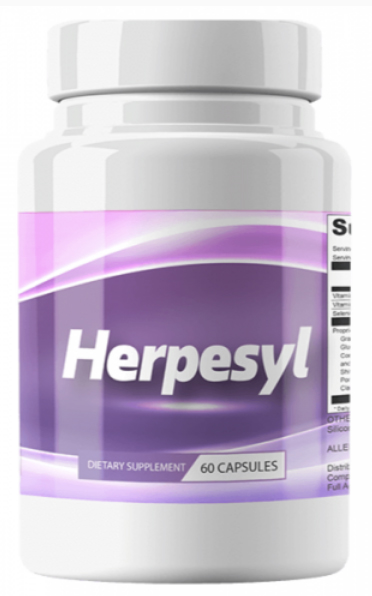Sacral Herpes is an HSV-2 infection, the same virus responsible for genital herpes, except that doesn’t appear in the genital or groin area. It usually appears as herpes on the back or buttocks, and is sometimes misdiagnosed as shingles. However, it is still HSV-2 and considered to be a form of genital herpes.
Sacral Herpes: Herpes on the Back

Difference Between Sacral Herpes and Shingles
Shingles: Shingles is known as herpes zoster, which anyone who has ever had chicken pox already has in their system. Shingles is the reactivation of that latent virus (varicella-zoster). It usually appears in one area, such as the face, chest, or abdomen. Many times, the shingles rash only happens once just as the chicken pox before it did. After that, it typically doesn’t reappear. About 20% of Americans will have shingles symptoms at some point. Shingles is a herpes human virus (HHV3), but it isn’t the same as HSV-2.
Sacral Herpes: Sacral herpes, on the other hand, is caused by the HSV-2 genital herpes virus. HSV-2 rashes tend to recur, with dormant stages and outbreak stages. Outbreaks can be triggered by stress, fatigue, a poor diet non-conducive to herpes management, trauma to the area, caffeine, or sunlight.
Quick Herpes Facts and Treatments
Statistics about herpes prevalence suggest that as many as one in four American women and one in five American men has genital herpes. Around 80% do not know, and many never experience symptoms. That means it’s possible to test positive through a blood test and to pass on the virus, but never have outbreaks. There is no known cure for herpes, but outbreaks can be treated and managed with antiviral drugs, diet, stress management, and natural remedies. You can get pain relief for sacral herpes following these tips.
Can HSV-1 Appear on the Back, Too?
HSV-1 is the virus usually associated with oral herpes and the common cold sore. Statistics suggest that as many as 80% of people end up contracting HSV-1 in their lifetime. HSV-1 can also be passed to and affect the genital area, which is fairly common.
A rash on the back may also be caused by HSV-1. Athletes like wrestlers and rugby players often spread the virus to one another through close contact matches and their contaminated mats. These outbreaks are more likely to appear on the upper back and shoulders. A culture of a fresh blister or a type-specific blood test can confirm.
Sacral Herpes on the Back Symptoms
Sacral herpes symptoms: Sacral herpes is the form os HSV-2 genital herpes that can affect the lower back, or one or both of the buttocks. It appears in the form of small painful blisters, often in clusters but sometimes not. The blisters tend to break open and scab or flake off. The first outbreak is usually the worst, lasting two-three weeks and accompanying flu-like symptoms such as fever, swollen lymph nodes, and general body aches. Recurrences are milder.
Typical herpes symptoms: Of course, HSV-2 outbreaks can also affect the labia, cervix, perianal region, the penis shaft or head, scrotum, and thighs.
Disseminated herpes: In rarer cases, herpes can spread to other parts of the body. Some people even get herpes outbreaks on their arm. Herpes that affects the eye is called ocular herpes. Herpes blisters in unusual places could indicate disseminated herpes, and should receive medical attention.
Why is it “Sacral”, Anyway?
HSV-2 hides in the sacral ganglia at the base of the spine, whether the outbreaks appear around the genitals or the lower back. This hibernation stage is the reason herpes is so difficult to cure. It’s either active and causing an outbreak, or it remains dormant hibernating in the nerve cells until the next outbreak or viral shedding period occurs. The back and buttocks are close to this nerve center, just as are the genitals.
Is Sacral Herpes Less Contagious?
Herpes is spread by skin-to-skin contact with an affected area. It is most contagious during an active outbreak. It can sometimes be spread without an active outbreak, during the asymptomatic shedding phase. Whether or not sexual contact is likely to result in transmission depends on where the virus is shedding on your body, and it would be helpful to speak to your doctor. (When is herpes least contagious?)
Takeaways
The most accurate way to find out if you have sacral herpes on the back, or any other type of herpes, is via a type-specific blood test such as the igG or Western Blot. These can differentiate between HSV-1 and HSV-2. You can even order tests online:
- Same-Day Lab Tests: You can order online and stop by a lab near you. Nothing will show up on your or your family’s insurance. Since we’re an affiliate of STDcheck, you can use this link to have our coupon automatically applied.
- Mail-In Test Kit: Nowadays, services like myLAB box will even send you a mail-in test kit so you can test yourself at home. Pick one of their test kits here.
Ask your doctor what she or he can offer and how accurate they are. Cultures can also be taken of a specific blister area if you want to confirm the location of the infection, but the blisters would need to be swabbed within two days of appearing for an accurate result. Waiting too long can result in false negatives.
It’s especially important to correctly diagnose HSV-2 in women who wish to become pregnant. You can still have children even if you have herpes, so there’s no need to panic! But you and your doctor will want to take extra precautions to make sure the baby arrives perfectly healthy and does not get infected. Read more about herpes and pregnancy here.








